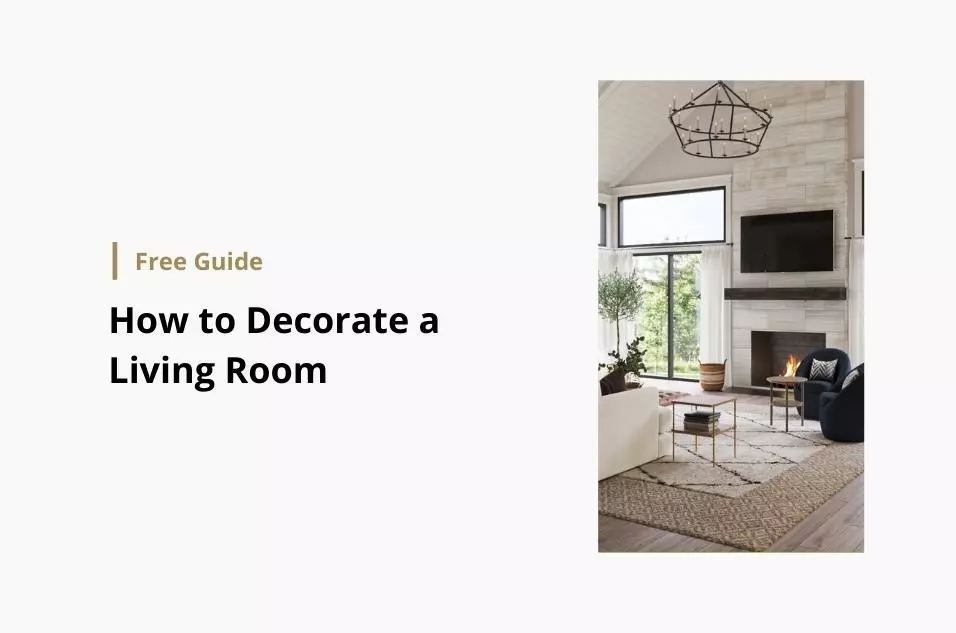How to Decorate a Living Room: 12 Steps + Tips
A living room is the hub of every home. It can be used for a variety of purposes, and it's usually the space where family members drink a cup of coffee, binge watch a favorite show, or spend time with friends and family. Since it's the most important space in your home, let's talk about how to decorate a living room for your needs and style.
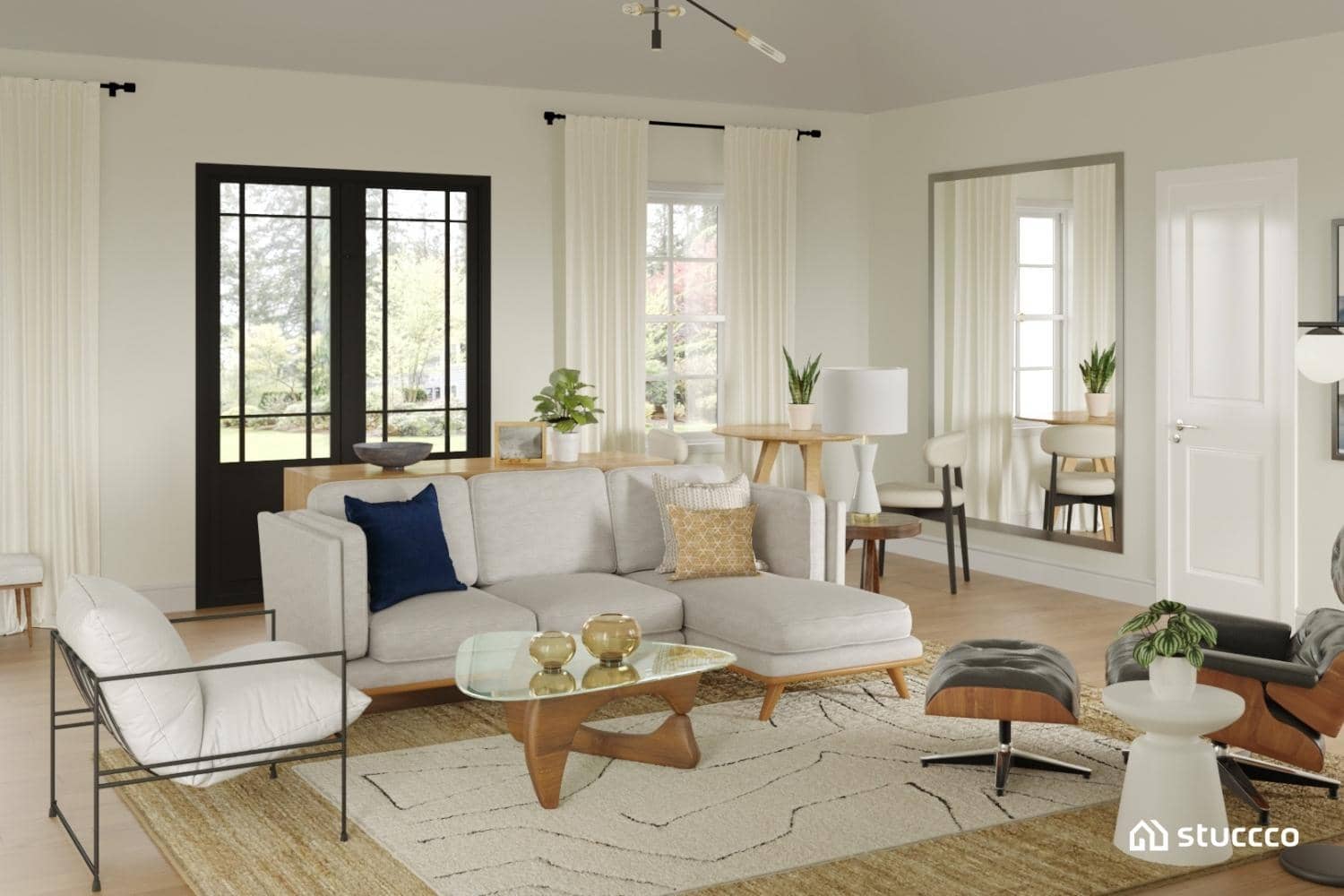
Looking for the best and most convenient way to complete your living room? With online interior design, you can work one-on-one with a professional interior designer to create a custom plan for your living room. Learn more about online interior design right now.
5 Fundamental Steps to Decorate a Living Room
As you begin designing your living room, there's one rule of thumb that is key to creating a beautiful and balanced living space--the 60/30/10 rule.
This rule makes it easy to create a color palette for your living room; 60% of the space should have a dominant color, 30% of the secondary color or texture, and 10% of an accent (or a "pop of color").
Keep this rule in mind as you gather your living room ideas, and follow these five steps to decorate your living room beautifully:
1. Define Your Style
Although most people know what type of home decor they prefer, they don't know how to define it clearly or identify it in furniture and decor.
The first step of decorating or designing any space in your home is to define your design style. This doesn't mean that your choices will be limited, but it does mean you'll have a clear goal and a guide to get there.
When you fail to start out with a clear design idea, you inevitably cause more confusion for yourself. Plus, it's much more difficult to make your final room design to feel complete and cohesive.
If you already have some design expertise, you may know exactly what style you want for your room. But most people aren't familiar with the differences between designs or how to choose their own. For those who want help defining their style, start with our design style quiz.
Then, for even more details, read our detailed guide to interior design styles.
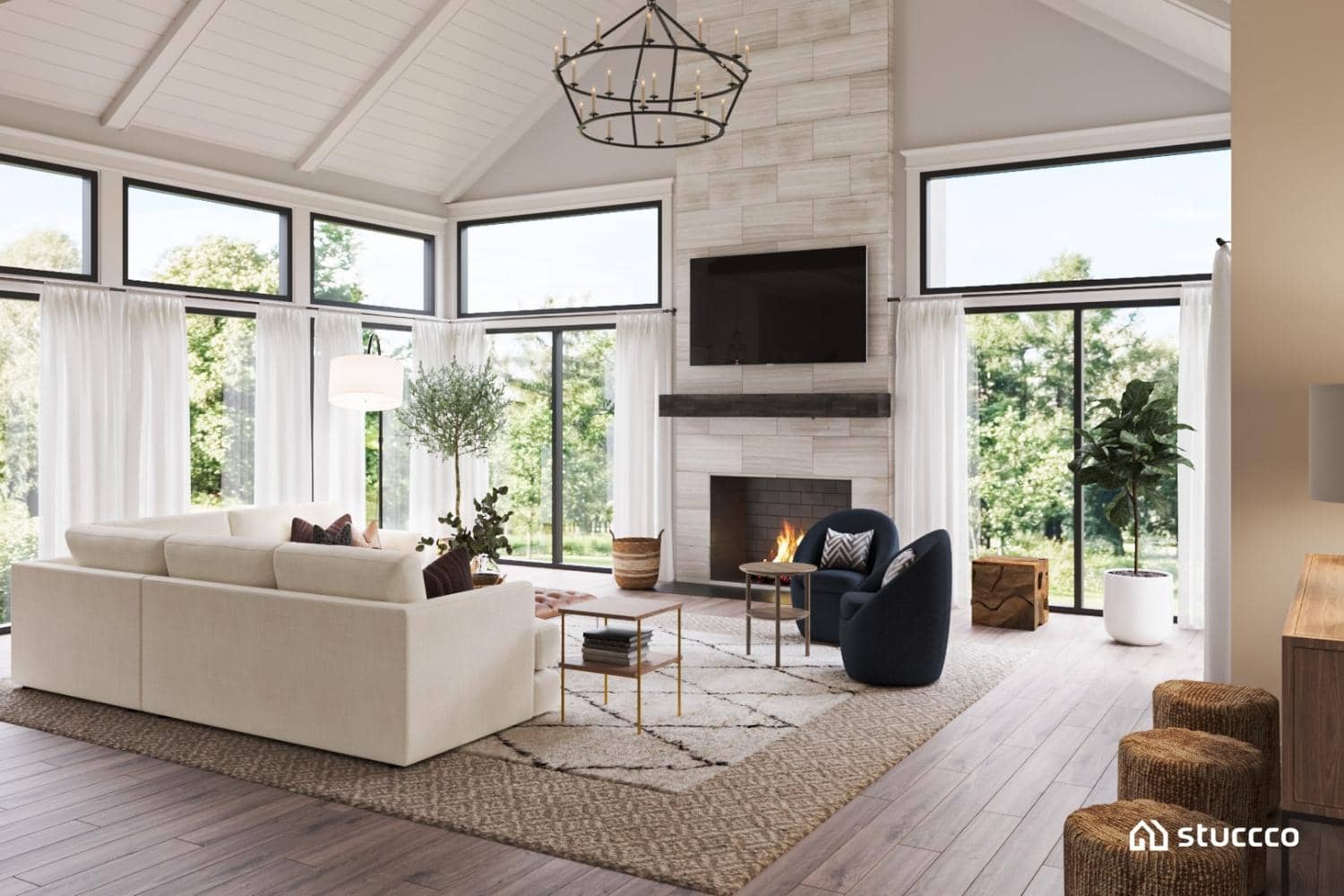
Another way to start gathering and organizing your ideas and your vision for the living room is with a mood board.
A mood board is a digital collection of images, colors, and potential decor items that make up a room. Professional designers create mood boards as the first step of every project because it's a visual way to convey the overall feeling of a room and develop the vision.
Stuccco designers have professional tools to make mood boards that show colors, furniture and decor items, and even the room's layout.
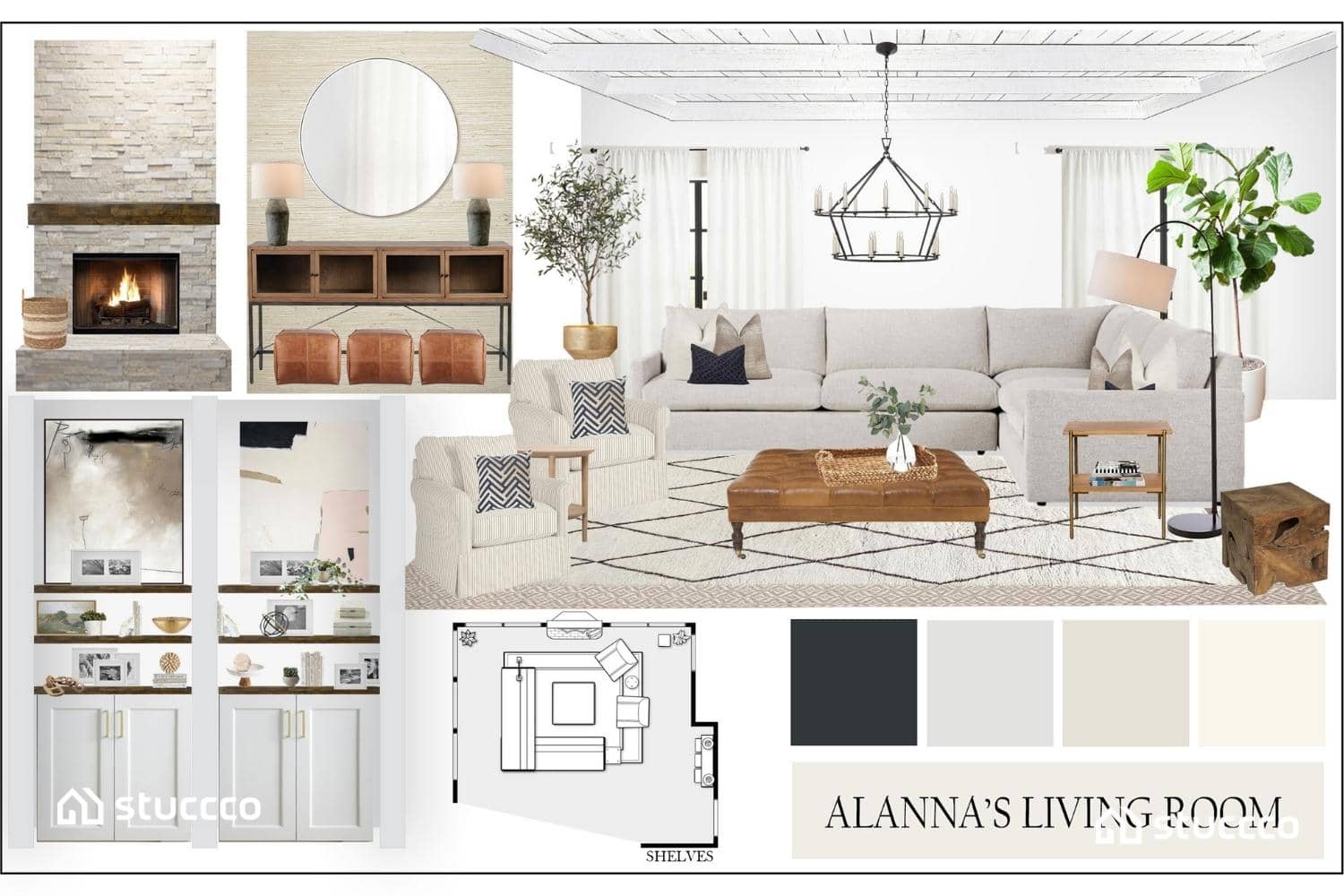
You can also use free online tools to start gathering your inspiration, like Canva or a simple Pinterest board. Seeing all of your ideas together can help you pinpoint what does and does not work best without having to spend your money or make multiple trips to different stores. If you choose to work with a designer, having all your ideas in one place can also help you communicate effectively.
Related: Get more inspiration for your living room from our designers.
2. Measure and Plan
After you define your style, the next part of your living room decorating project is measuring and planning. This includes budgeting, measuring, and determining the layout.
Set Your Living Room Design Budget
Your budget will primarily depend on your personal finances, but you should also consider the size of your living room and the general cost of decor in your area. Setting a budget will make it much easier to choose the right pieces for the room and avoid feeling stressed throughout the process.
Once you have a specific budget for the room as a whole, it's a good idea to divide it into a budget for different parts of the room. If your living room budget is $3,500 and you start by purchasing a $2,000 sofa, you'll end up having to sacrifice other elements of the room.
Measure Your Living Room
Next, you'll need to get a measuring tape and gather all of the measurements of your living room. Don't forget to measure any windows, doors, built-ins, or other features, because these will affect the overall placement of your room and furniture layout.
Plan the Room's Layout
In order to plan a layout that will actually work for you and your family, you need to determine how the room will be used.
Living rooms are arguably the most versatile spaces in any home. They can be used for watching TV, eating meals, hosting overnight guests, hosting cocktail parties, or having game nights. Many people use their living rooms for more than one purpose, so the living room is also a home office, a playroom, a dining room, or a craft room.
Getting specific about how the space will actually be used is a key part of planning.
Once you have an idea of the room's purpose and your needs for the space, you can start figuring out what layout works best for your needs. You should also make a general plan about what type of furniture pieces you'll include; like a sofa, sectional, recliner, loveseat, accent chair, ottoman, or coffee table.
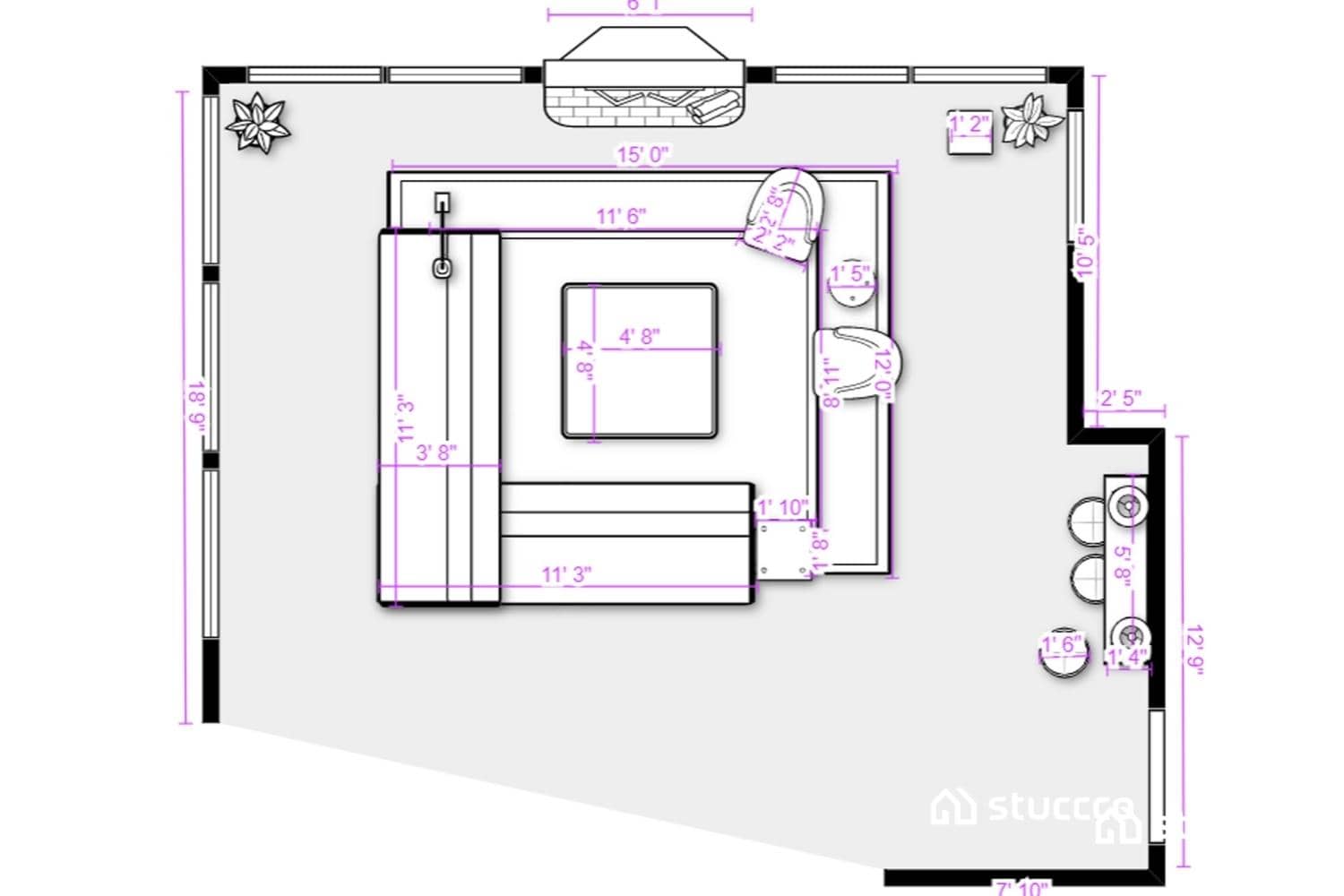
Sample floor plan from Stuccco interior design
Make sure to pinpoint the room's focal point. For many people, the natural focal point of the living room is the television. If that's the case, make sure you also make a plan for the TV area. Consider adding a TV stand, an entertainment center, or built-in shelves.
Related: 13 Steps to Decorate a Bedroom
3. Set the Mood with the Walls
No living room design is complete without planning for the single largest element: the walls!
There are endless living room design ideas for your walls. With just paint, wallpaper, or wainscoting trim, you can create a unique and beautiful backdrop for your living space.
In general, it is safer and easier to have a light, neutral color in your living room, which is why many homeowners choose white, gray, or off-white colors for their walls. It can be more difficult to design a room with bold walls without an interior designer, but putting thought into possible wall treatments can pay off with an elevated design.
Here are just a few examples of unique living room walls:
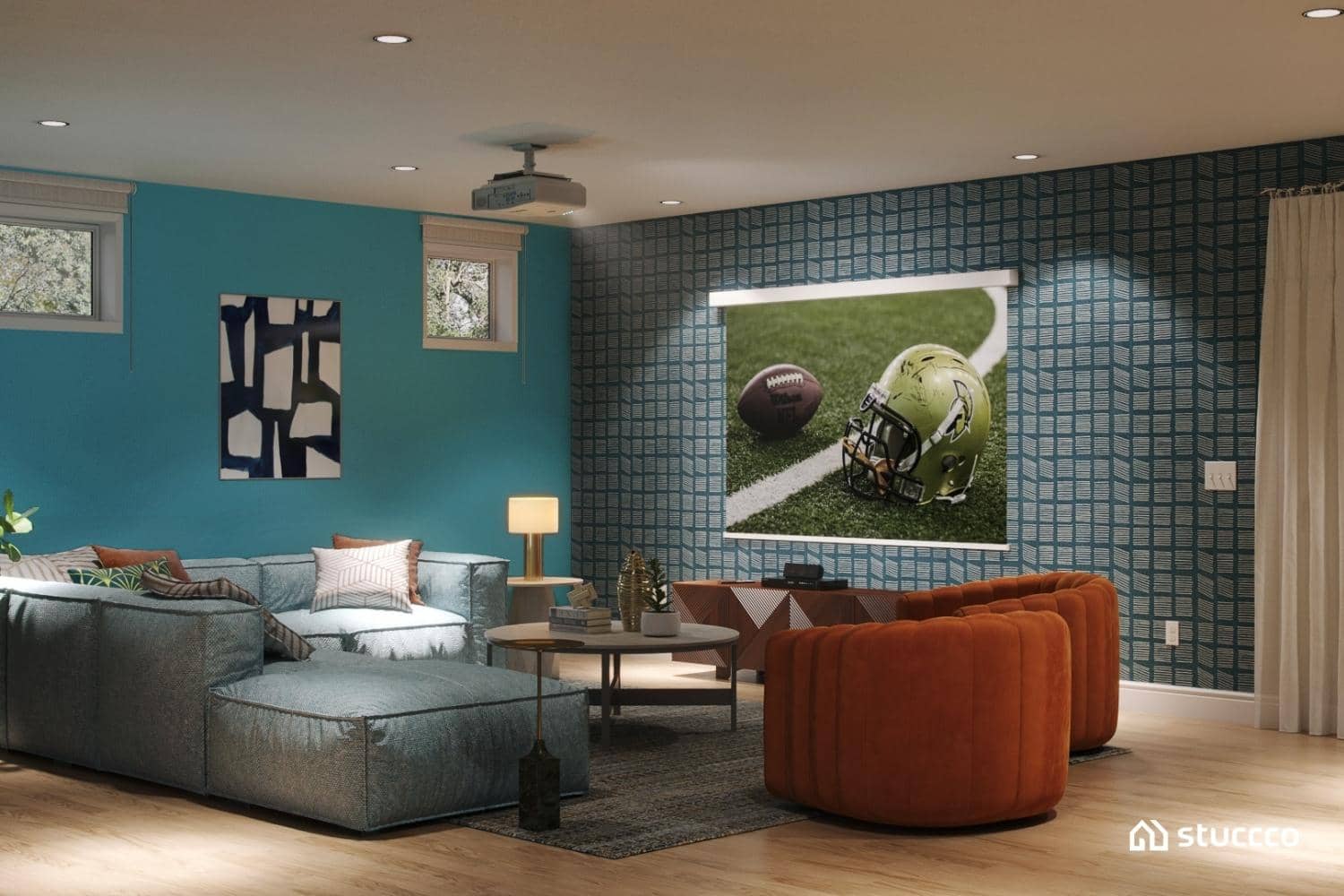
Example of living room with wallpaper
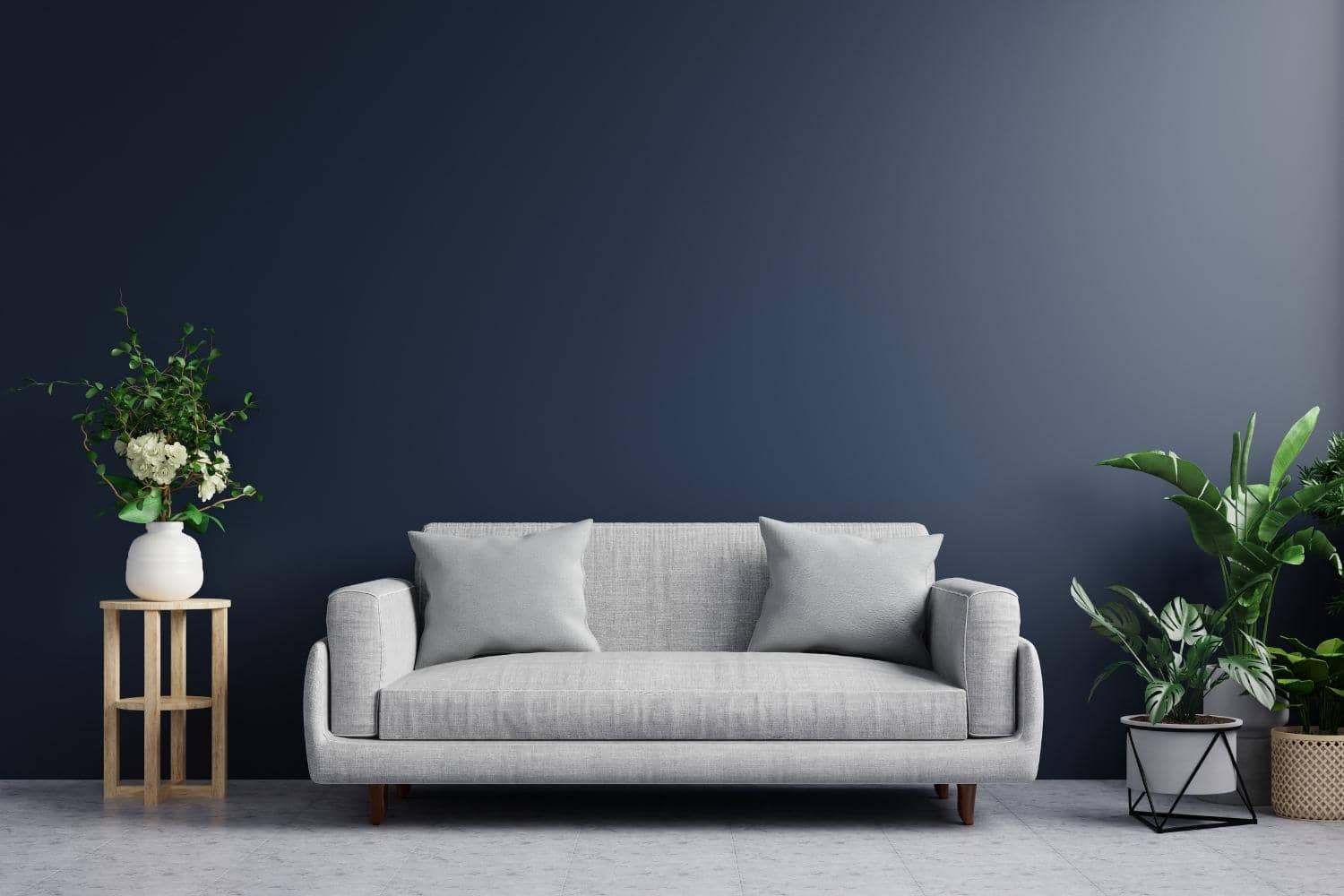
Example of bold living room wall color
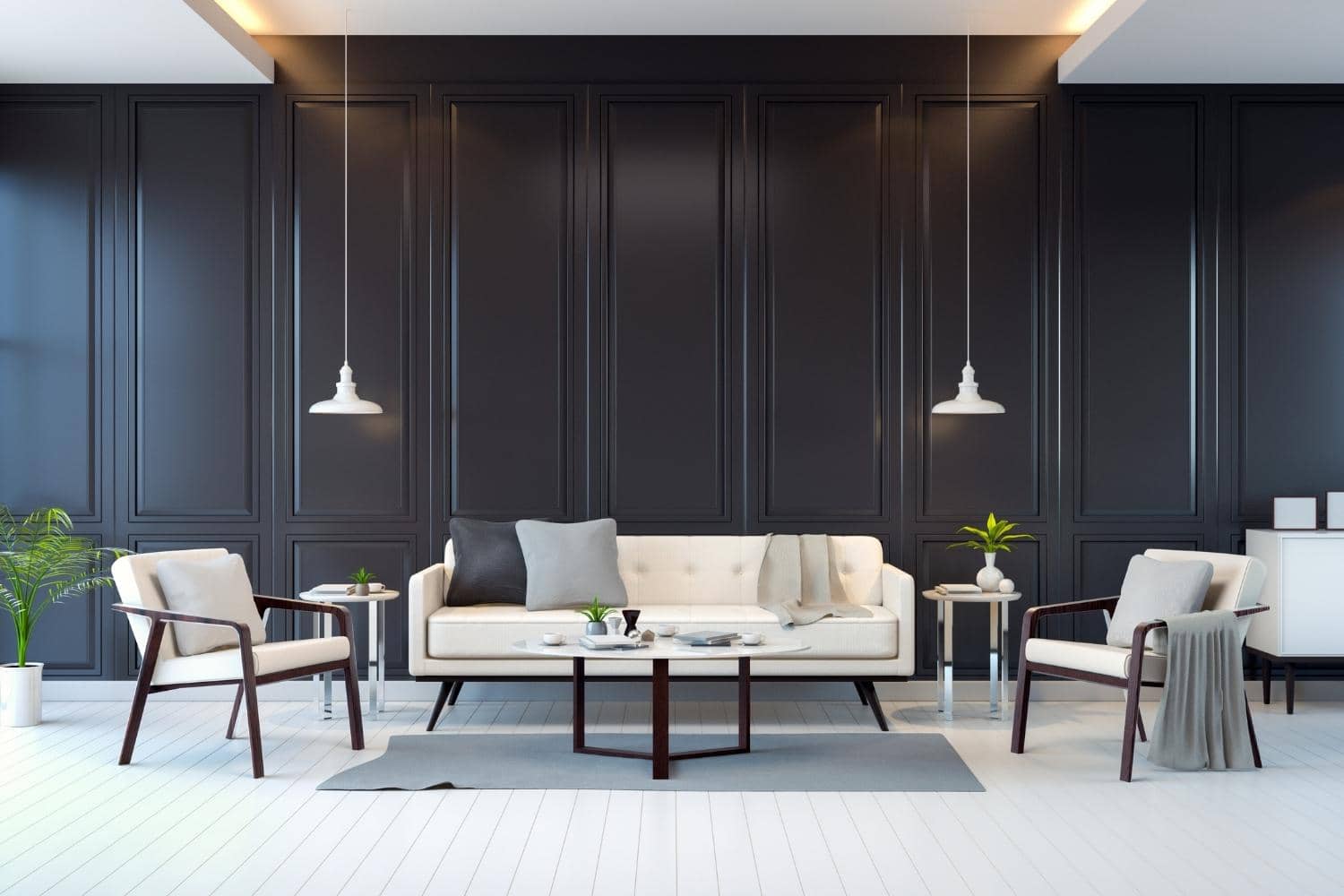
Example of bold living room wall treatment
4. Shop for the Biggest Pieces in the Room First
Next, it's time for what many designers and homeowners consider the most fun--shopping!
Resist the urge to shop for the entire space at one time. Instead, start by looking for only the biggest pieces in the room. By having these chosen first, you'll be able to shop for all of the other finishing touches more easily.
In a living room, the biggest pieces are usually:
- Sofa (sectional, a couch, loveseat, etc)
- Rug
- Additional furniture (coffee table, accent chairs, entertainment center, etc)
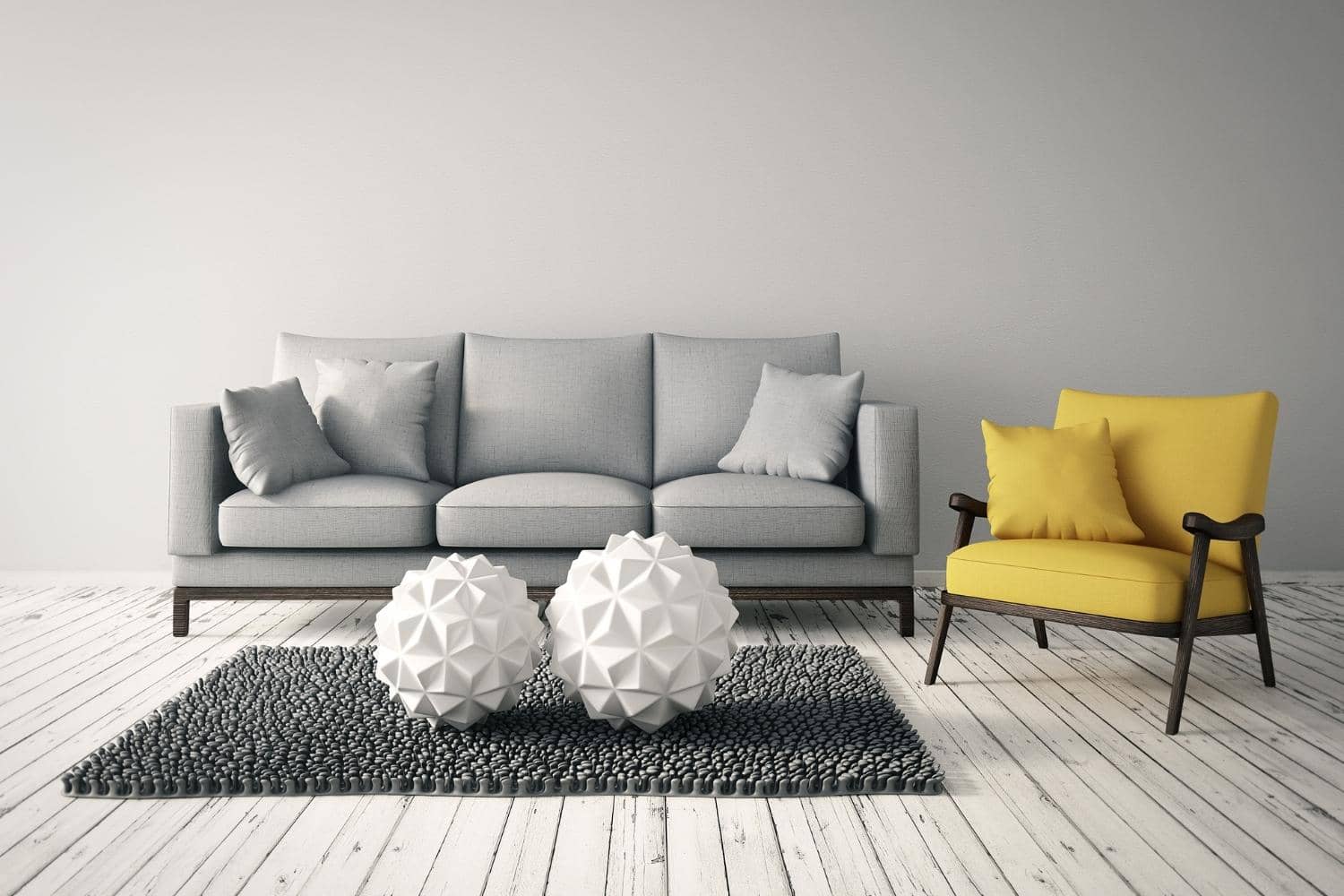
Keep reading for living room design tips to curate the perfect pieces for your space.
5. Add Decor & Implement Your Design
Many people think "decor" only refers to a small selection of decorations like wall art, vases, candles, or floor lamps. However, decorative items actually include almost everything in your living room, including your coffee table, side tables, shelves, pillows, baskets, and more.
The final steps of implementing your living room design will easily take the longest amount of time. If you start with a solid understanding of the design style, the room's purpose, and the key elements and pieces in the room, completing the project can fun be and stress-free.
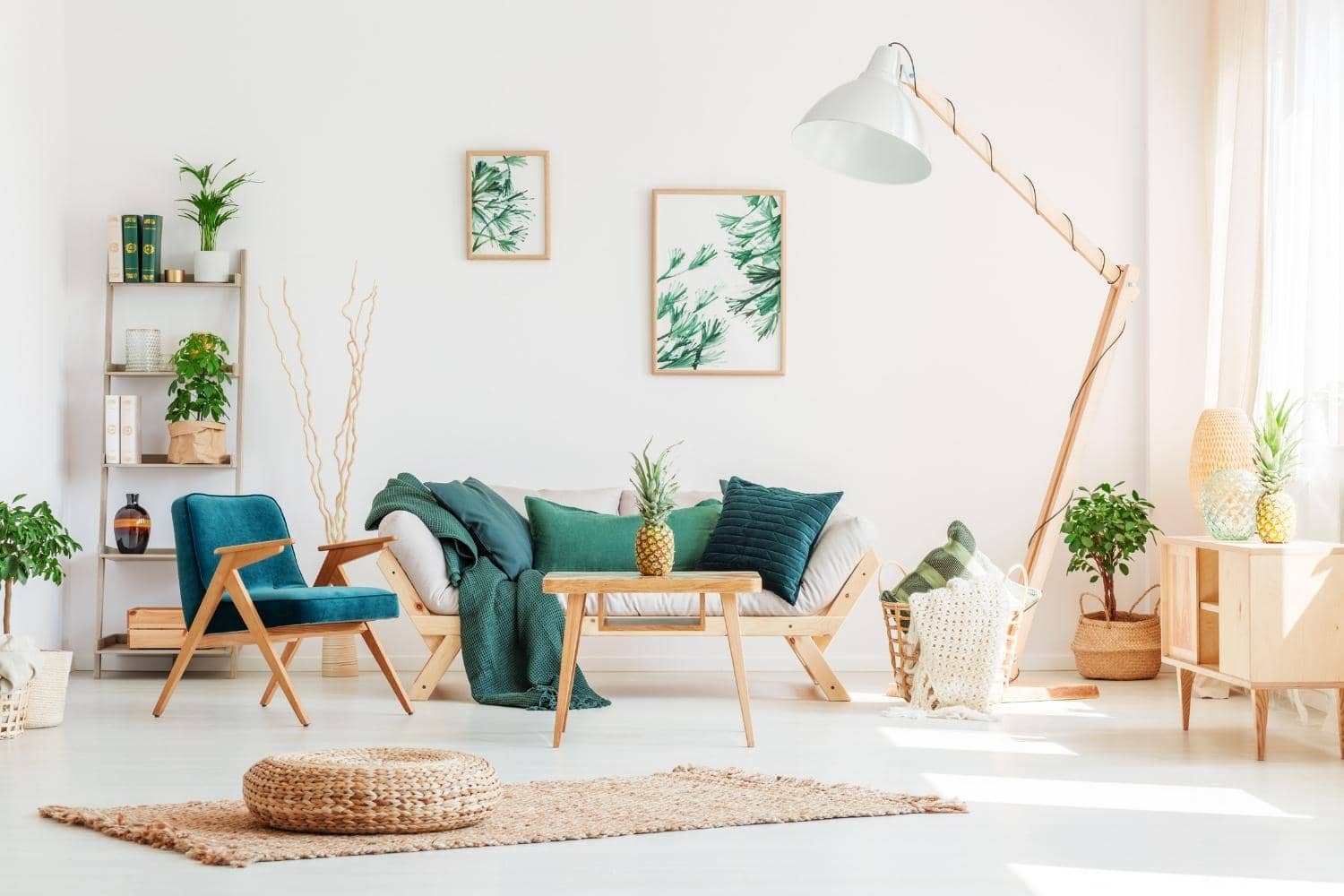
Related: 5 Design Tips to Make the Most of Small Spaces
7 Living Room Decorating Ideas + Tips
There are millions of unique ideas appearing all over the internet every day--it can be inspiring and overwhelming at the same time. Instead of flooding you with more living room ideas than you need, let's cover a few of the most important design concepts that apply to every space--whether you have one small living room or multiple living spaces in your home.
Here are seven living room design tips that make a room look professionally done. For even more detailed ideas, read 42 living room design ideas.
1. Incorporate Texture
Texture is like a secret sauce for many interior designers. It's usually not obvious to buyers or homeowners who aren't familiar with design, but it automatically adds visual interest to any space.
For example, this space uses only neutral colors, which could feel flat and boring. However, the metallic lights, table, and chair legs contrast with the softness of the rug to make the space visually appealing. This is referred to as "visual weight" in the design world, and it helps different elements of the design stand out.
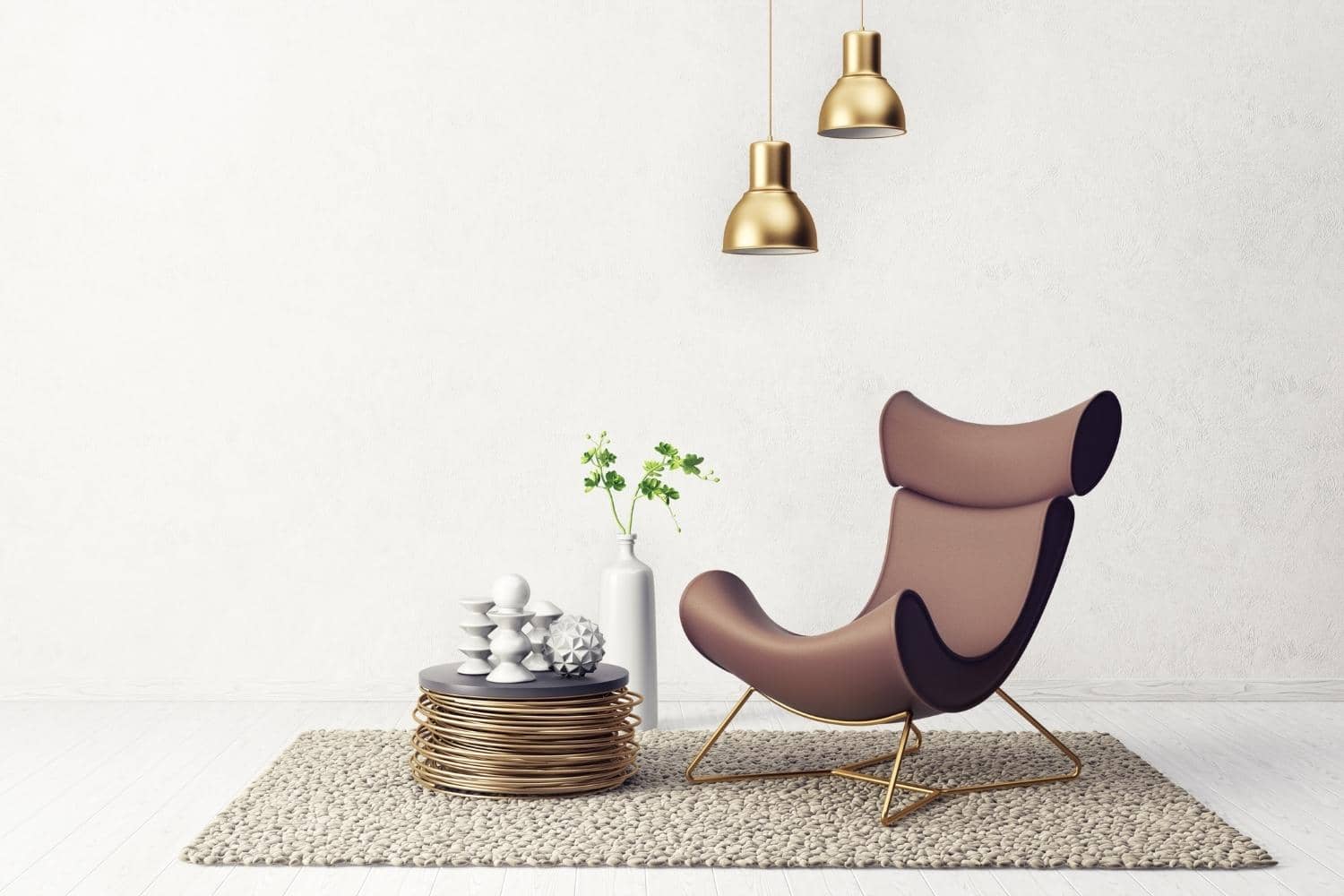
In living rooms in particular, there are many different opportunities to add texture. Think about the texture of your rug, furniture, throw pillows, decor (window treatments, side tables, vases), blankets, and even your walls. All of these surfaces could use texture to complement the space.

Even without a rug, the above photo uses texture on the fabric sofa, in the plants, and through the patterns on the pillows. The color palette of this space is limited, but the thoughtful use of texture makes the space look dramatic and interesting.
2. Include Patterns for More Interest
In the design world, texture and patterns are closely related because they are both needed to create visual interest. Sometimes, adding "texture" to a room can be done with patterns instead of materials.
Patterns are highly subjective, so it can be difficult for homeowners to find a pattern that's right for their space. If you find a pattern that you love, it needs to be chosen with serious consideration about your overall space.
Refer back to the 60/30/10 rule. In order to make your space feel cohesive and complete, you don't want something standing out more than everything else. For example, if you work primarily with neutral colors, choosing an extremely colorful rug with a large, loud pattern will attract all of the attention.
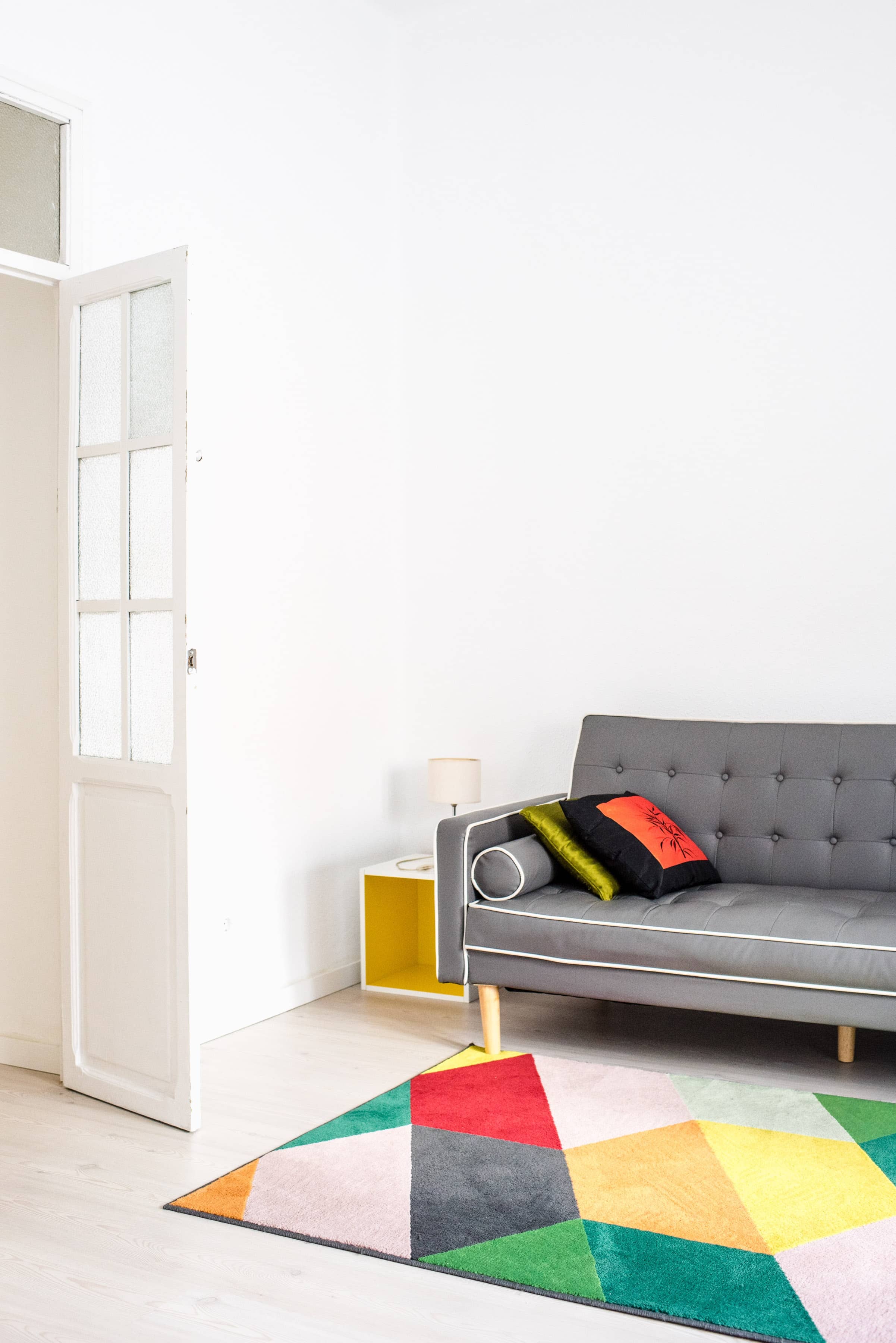
Even though this design is interesting as a photo, it wouldn't be an ideal living room for most people because of the lack of balance.
However, with the right overall design plan, any pattern can work in your living room. In fact, the following example from a Stuccco designer, there are two very different patterns in the rug and the throw pillows. Because of the balance, it's easy to appreciate every detail in this stunning living room.
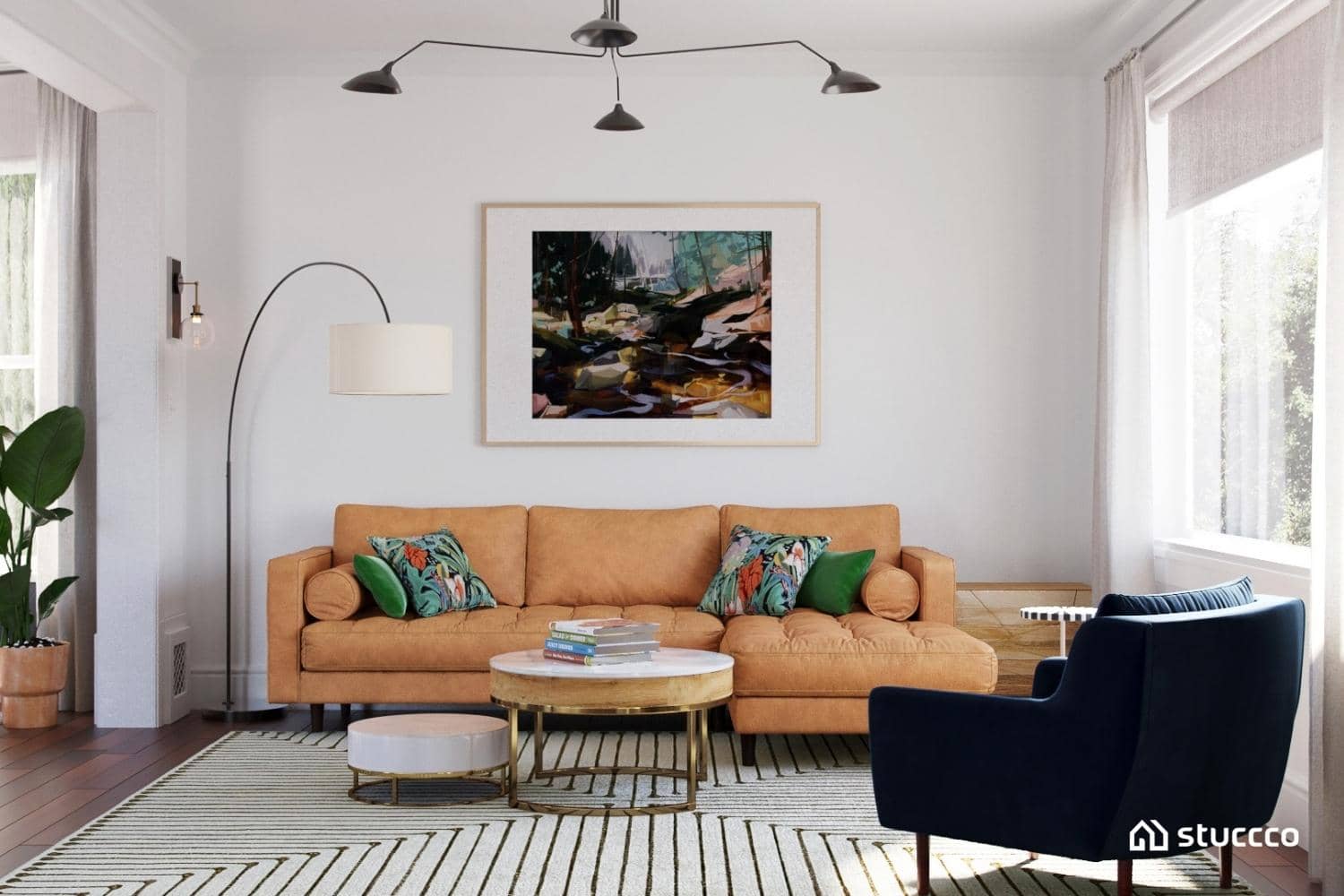
3. Think about Scale
Just because something physically fits into your living room doesn't mean it's the right size for the space.
"Scale" generally refers to the size of an object. When you are planning your living room's layout, you'll naturally think about the size of your furniture--most people would automatically know that a 10-foot theater sectional wouldn't be right for a tiny house.
However, it's also extremely important to consider the scale of every item in your living room as you shop for decor. Using a 3 ft. x 5 ft. rug in an open-concept living and dining room will feel awkward and misplaced.
It's very common for homeowners to misunderstand scale, especially when it comes to dressing their walls. They will often add just a few small photos to decorate a large living room wall or fireplace mantle. Instead, take advantage of your wall space by adding large artwork or creating a gallery wall with a variety of art and wall hangings.

It's also important to think about scale when choosing patterns. This most frequently comes into play when choosing a rug, since it's often the largest piece in a living room.
As discussed above, your living room rug is a great opportunity to add texture and interest to your space. However, a large rug with a large scale pattern or bold color choices can end up overwhelming the room instead of contributing to the space if not done correctly.
On the other hand, a bold rug like the one below can be a powerful feature in a room that is correctly balanced with color, texture, and patterns.
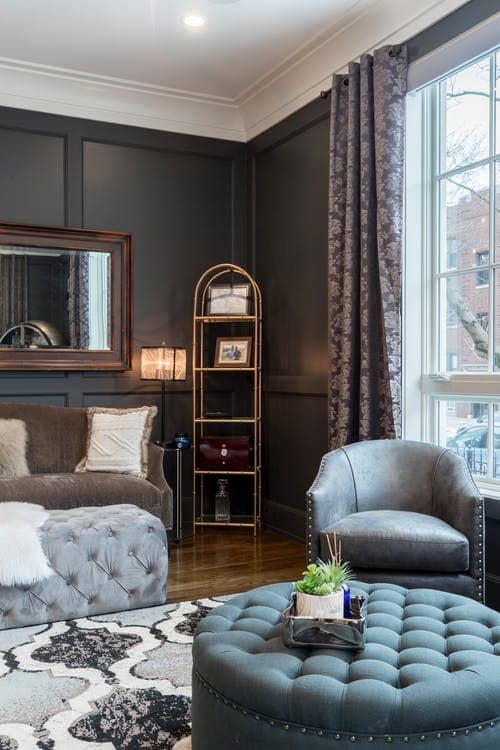
4. Contrast Colors, Neutrals, and Texture
Contrast is a powerful concept in every form of art, and interior design is no exception. Whether you choose to use only neutrals in your space or a wide variety of colors, make sure to add in some kind of contrast.
For example, if you have big, white walls, you can contrast them with dark furniture, like this photo below. This designer continued to use only neutrals in the wood tones, table decor, and pillows, but the contrast of light and dark tones still makes the space look beautiful and complete.

On the other side of the spectrum, the following example uses almost every color in the rainbow. Although this style wouldn't be right for most people's living rooms, it still looks professionally done because of the combination of light and dark shades.
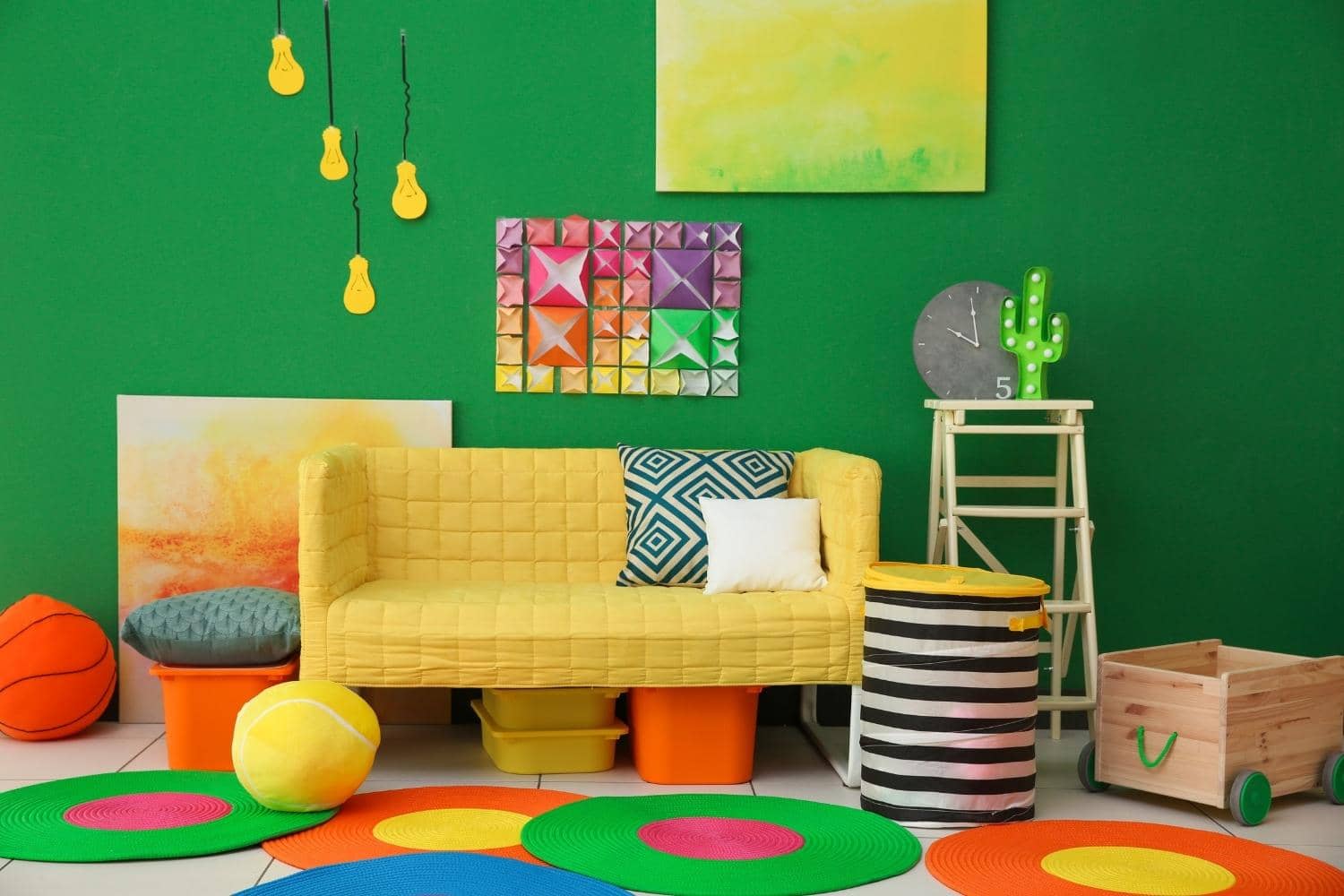
CoCo Chanel said it best when she said, "Women think of all colors except the absence of color. I have said that black has it all. White too. Their beauty is absolute. It is the perfect harmony."
5. Add Greenery
Adding plants is one of the easiest, quickest, and most affordable ways to make your living room look complete. Greenery adds life to any space--it can even make a plain coffee table or buffet look intentional.
When possible, using real plants can add health benefits to your living room by cleaning the air and providing oxygen. However, if you don't have a green thumb or the ability to maintain growing plants, it's not a requirement. Faux plants come in all sizes, shapes, and styles.

6. Don't Forget About Light Fixtures
Many people don't think of light fixtures as part of their decor, but lighting is absolutely key for the overall look and feel of your entire living room. The right light fixture can add style to your space in addition to creating a mood.
Changing a light fixture is a relatively affordable and simple task that makes a massive impact on your room. Wall sconces are another option to add additional lighting and ambiance.
Depending on the way you use your living room, you may need bright, simple lighting the majority of the time. However, there may be other times when you want to create a more inviting atmosphere with ambient lighting. Think about these times as you shop for light fixtures, and consider adding dimmer switches to your home.
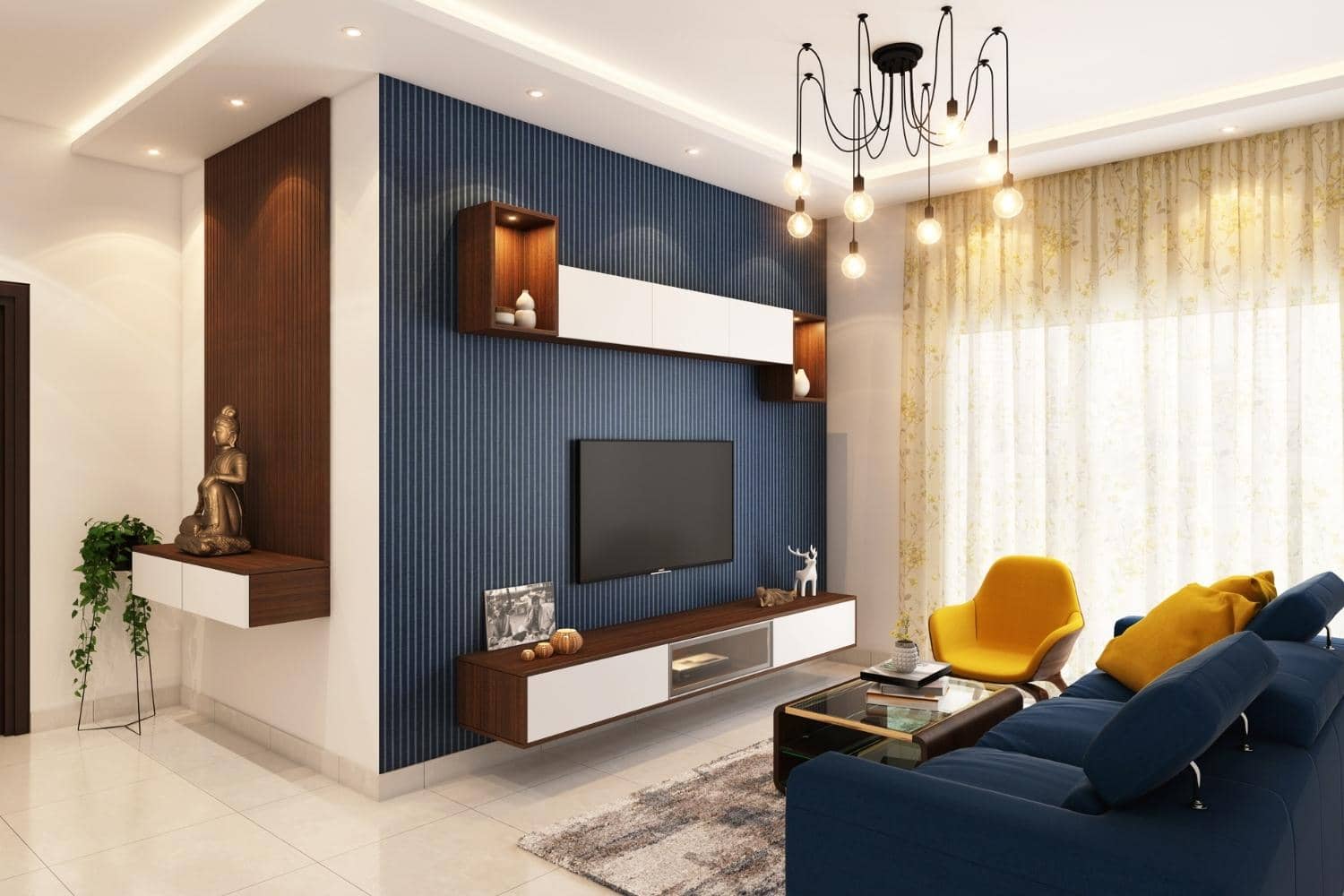
7. Design a Multipurpose Living Space
While some homeowners have multiple living areas and rooms that can be used for a single, distinct purpose, most owners and renters are opting for multipurpose living rooms. In fact, in our research on what buyers want in houses, over 90% of home builders noted that residents are specifically looking for living areas that can be used for more than one purpose. This number has skyrocketed in the last few years as more people work from home and want to use their space more creatively.
Even small living rooms can be designed strategically to fit multiple needs. Think about dividing your space with paint colors, room dividers, or simply using portable furniture to make quick changes easy.
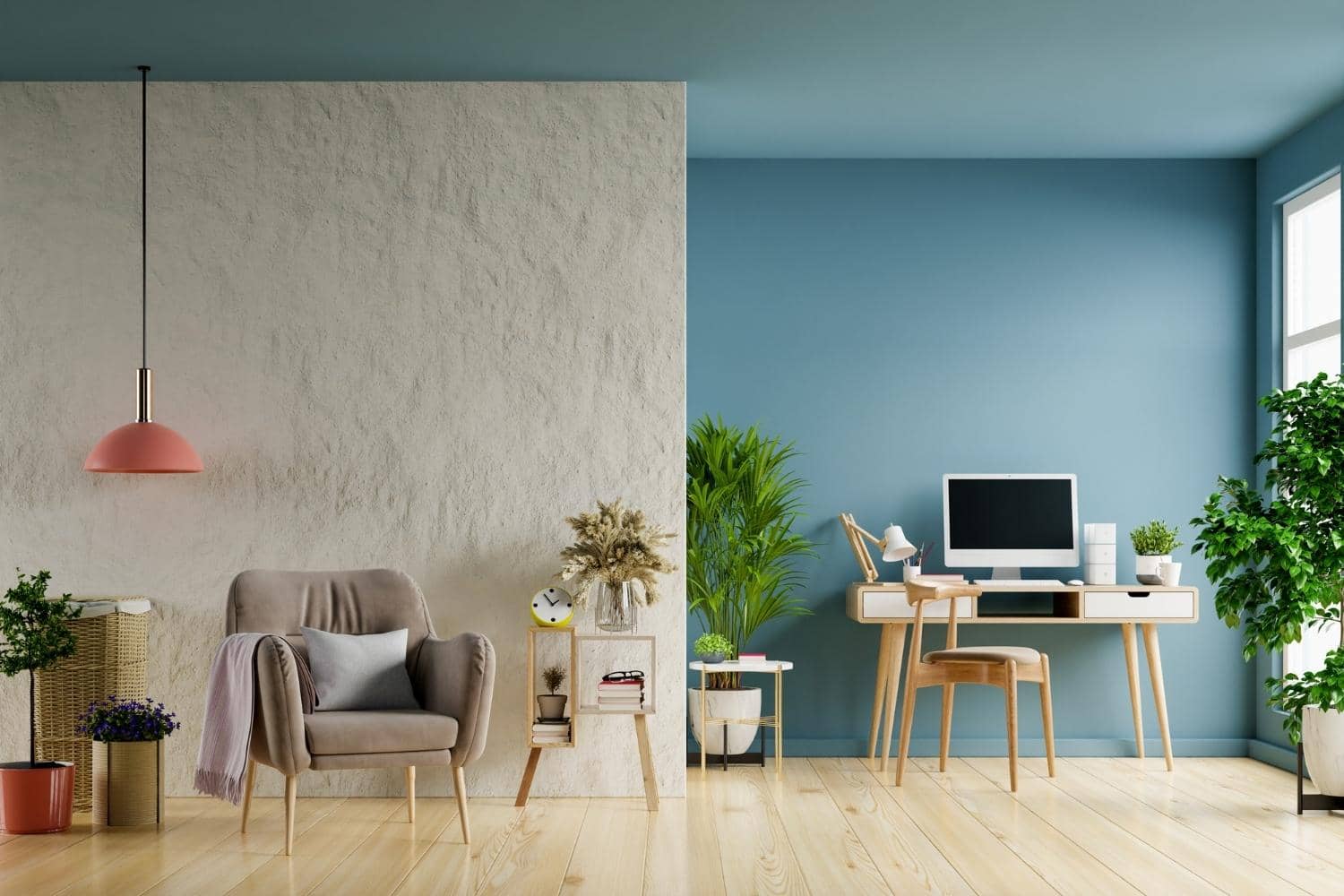
Curating Your Own Living Room Ideas & Design
The living room design process is relatively simple in concept, but differs for every living room and for every person. The steps included here can be applied to every interior design style, from traditional to modern and everything in between.
Even with these steps and tips, it can be overwhelming and confusing for DIYers or homeowners without a design background. Interior design requires an artistic eye and an understanding of balance and harmony, which don't come naturally for most people--but that doesn't mean you shouldn't have a professionally designed space.
With Stuccco online interior design, you can work with a professional designer to create a custom living room design that fits your style, needs, and budget. Stuccco is the only online interior design company that employs only experienced professionals and doesn't rely on paid commissions--meaning that our designers only care about providing you with a design you love.
Start your online interior design today!
Plus, for even more interior design resources, don’t miss our other detailed guides:
